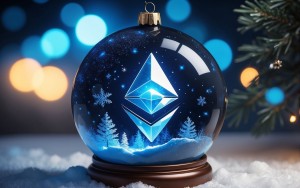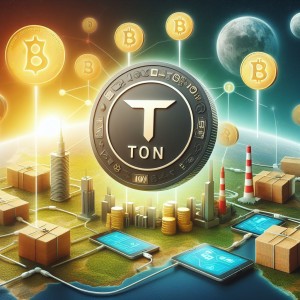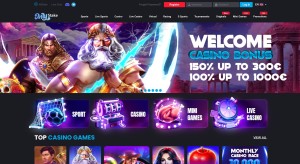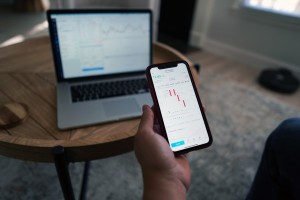A new metaverse platform has been making waves in the crypto community over the last month. Next Earth is the first metaverse directly linked to the blockchain, along with the integration of DeFi and DAO. And all with the noble aim of benefiting ecological charities. We managed to pry the CEO, Gabor Rétfalvi, from his hectic schedule, to answer some of the important questions on everyone’s mind.
What was your primary motivation to create your own Metaverse?
There’s this project called Earth2 that a good friend of mine showed me… I immediately bought some land because it seemed like a fun concept. But the platform itself was so chaotic. I couldn’t log into my account for 2 months! Then I took a deep dive into the background of this project and I saw that a lot of users were stuck and having similar problems. For example, they couldn’t withdraw money, there was no word from customer support, etc. It was baffling to me why they didn’t choose to build the whole platform on blockchain. I took another deep dive, found some promising contacts and a great team came together to create the first blockchain based metaverse. The deeper we delved, the better opportunities we came across. Ultimately, we decided to go the full-environmental-charity route, as we wanted to be trendsetters in this regard. The world of crypto is a whole other dimension. So we wanted to show that to as many people as possible with this project.
Why use the exact copy of Earth instead of creating a new one, similarly to Sandbox?
The popularity of other similar projects gave us the boost. We loved this concept. What surprised us the most, was that the more we immersed ourselves in the project, with every new technology, idea, and even the problems, we were able to build and improve the whole project in incredible ways. It’s entirely different from a regular company. Choosing Earth as the basis of our grid was a great choice, as we constantly receive positive feedback (community-wise and from a technical viewpoint). It’s much more marketable than a black grid that you can point at and say, “there’s going to be an amazing VR world here, trust me”. Or just consider its scope. Afterall, we’re talking about the whole world, OUR world – and everyone is familiar with it already! We’d go as far as to integrate other metaverse platforms on our oceans; imagine laying down the foundation of a united metaverse on a shared blockchain ground. It’s quite extreme, I know, but the future is here and we’re right in the middle of it :). It’s no coincidence that Facebook is also heading in this direction. So it can be said that we have a great idea, great technology, an incredible community, decentralized finance, and DAO governance. To be honest, this is what we should have in our real world already. So this project is not just a test, but a trendsetter. And I like to think that our future holds similar values.
Could you explain the economy behind your platform? How can landowners earn tokens (staking, etc.) and what can they spend it on?
Land ownership is what we build everything upon. Since it’s all blockchain based (NFT), these tiles are actually owned by the users instead of the platform (us). We have a special allocational system, which reallocates a part of every transaction to landowners (may it be a land purchase, trading, selling an NFT or business transactions) by recording it in blockchain. For example, as stake reward, for those who connect their tokens to their land tiles: 20% of all new land purchases will be reallocated to landowners as stake reward. Our token launch is planned for Q4 2021 by the way, and from that point on, it will form the basis of the Next Earth ecosystem – from buying land to accessing all available features. The token will be launched in the framework of a multifront IDO campaign, as it’s a great marketing opportunity. Our initial tool to raise capital was ITO (Initial Token Offering).
But there are countless features to enjoy besides owning land. Participating in the DAO, creating NFT Land Art (a first in the world of metaverses), community involvement and play to earn solutions (we have three different play to earn features planned for this year). Along with DeFi solutions that we can’t talk about as of now, as we have some really unique ideas. Last but not least, parallel to land ownership, you’ll own a part of the Next Earth platform itself!
How will you implement DAO? Does owning your token give governance rights to the owners? How is the token and the DAO connected?
Our very first DAO vote is scheduled for the end of August. Landowners will be able to choose which environmental charity we should select as the beneficiary of the charity pool. We’re talking about $130.000-$150.000 worth of BNB, so it’s an exciting development!
As we progress in building the platform, land owners will gain bigger and better opportunities to influence the outcome of the project. We believe that four thousand or fourty thousand people can make a better decision than four. 🙂 I could extend this mentality to some real world examples, but let’s stay on topic. The attitude and technology in crypto fits our vision well, if we exclude the shitcoins with no actual purpose and value.
Our goal is to create a self-sustaining platform. And DAO governance plays a critical role in this regard. We’d very much love to move to VR later on, but it’s entirely up to the community. If the decision was ours, we’d wait until we have unlimited money to spend and work with some cutting-edge VR developers to create the exact copy of Earth in VR. But as I said, it’s up to the community, and we’re probably years away from this decision.
While the property you buy on Next Earth is an NFT on its own, your website mentions NFT collections. Could you elaborate?
Yes, land ownership is entirely NFT-based on our platform. Technical fun fact – what landowners buy is not the land that they select, actually. We just provide a platform, where they can mint their own NFTs that look like the exact copy of that land. These do not exist until someone buys the “rights” from us to mint that area. This way, users actually create (mint) these lands and we just provide a platform for them to visualize it. I know, it’s mind blowing, but we find it crucial to turn users into creators and “eternal” owners of that NFT. Your ownership will be present in the blockchain forever, and thanks to the smart contract, you’ll receive 0.5% of every transaction when that NFT changes hands.
Yaroslav Belkin, my crypto mentor, told me that in two years time the NFT market will be several times the value of the whole crypto market, because this technology can be used for basically anything. It sounds absolutely unbelievable, but I think most of us don’t fully understand the magnitude of this yet.
Unfortunately, I can’t share any details of the upcoming NFT collectibles, as we’re still working on the exact concept of it. However, I believe that this part of the platform might surpass the value of the metaverse. So keep an eye on it! If you visit our Discord server, you can find the results of our treasure hunt game in the Announcements channel. Our first community members were able to find 20 red X marks while testing the map, and these spots will be turned into our first original NFT collectibles called “ORIGIN20”. This will give you an idea of our vision. Ádám Drágus, our art director, will make sure that the NFTs created by us, our community, or third parties are of the highest standard. And we haven’t even talked about NFT Land Art, which will give everyone the opportunity to enter the world of successful NFT artists.
Are there any land tiles that you demarcated for the project? Similar to an IDO where the team reserves X percentage of the tokens; have you reserved some land tiles?
We have, but not for ourselves, but for future collaborations. We crafted 100 Moon Packs of randomly assigned land, so there’s no way to know what we got. This was the only way to keep everything fair during land distribution. As you can imagine, there was a bloodbath when we opened the map… the Eiffel Tower, the White House, the Statue of Liberty and other, similarly popular spots were bought immediately.
Moreover, we reserved one billion randomly allocated water tiles for artistic collaborations. The income from these collaborations will go to our charity pool. Our NFT Land Art platform will be mostly based on water tiles, so anyone can create 10×10 pixel art pieces. We have the contact of some big NFT artists, athletes, and artists from other areas; honestly, it’s great to see how open-minden they are and the calibre of people that philanthropy can attract. What most people know of crypto is nowhere near its real usefulness and practicality. Its effect will be much greater than you’d think.
What’s the plan once every tile is sold? What will be the incentive for landowners to build and trade? How will you attract new users?
First of all, we don’t expect to sell every land tile, as there are 5.1 trillion (5,100,000,000,000) tiles. After the initial purchases, we expect popular places to change hands before users start to buy the less popular cities and areas. In addition, as the number of users grows, more and more companies will be interested in appearing on the platform. Landowners will get a share of every business transaction – basically NFT land ownership will symbolize your share in the platform, like a giant community company, anyone can buy a “share” at any time.
We designed our tokenomics in a way to generate business activity on the platform. For example, landowners and active community members will receive tokens directly from us so that they can start their own businesses. Obviously, this will be a bit more complicated – smart lock contracts will protect these funds and users will only receive it if they meet specific expectations and requirements.
We want to attract as many people as possible with the influx of services – the ultimate goal is to serve as a crypto gateway for the masses. They could take a peek into the world of crypto with our help, while we’d bring new, external users to crypto-based companies in order to expand this market.
Over time, VR and similar features might be added, but we must create a solid foundation first. It’s a must for long-term sustainability. There’s a Korean 3D designer, who’s planning to create a VR NFT gallery, and investor groups want to start building two virtual megacities as soon as possible. One of these investors asked us to sell the entirety of Los Angeles to them, so that they can demolish it and build a VR megapolis in its place… Since there is no way to know how this would affect the project, we asked them to wait for a later stage and told them that the community must approve these decisions. But we did offer them a virtual island or an underwater, Atlantis-type area anywhere. 🙂 I also talked to the head of an NFT artist network; this team owns a space station gallery, which they want to put in orbit around Next Earth.
To sum it up, even after months of involvement, I must remind myself that the needs of this new generation are way different from ours. Sometimes I laugh when I think about what on earth we are doing, some of these concepts still sound unbelievable. But Covid catalyzed these technical developments and you either keep up with these changes or you can retire at 35. 🙂
What blockchain solutions are present in the project? The BNB presence is obvious, but how does ETH, ReefChain and Chainlink come into picture?
Land NFTs are ERC-721 tokens, our smart contracts are written in Solidity, and the project is EVM (Ethereum Virtual Machine) compatible. Since the majority of land purchases are microtransactions, we made a bridge to the BSC network in order to avoid high gas fees and slow transactions. It’s no secret that we’re in contact with the Polygon team too (to bring an Ethereum based layer-2 solution to Next Earth).
We love the people over at REEF Finance, their goal is very similar to ours: make DeFi as well-known as possible. Ever since I educated myself on DeFi, going to a bank feels like a real pain. REEF also offers cross-chain solutions, so technical cooperation is inevitable once we launch our mainnet.
We use Chainlink as the Oracle network to keep token prices up to date – they’re the biggest and most reliable providers.
Numerous other strategic partners will come onboard soon, as networking is one of our strongest tools. Besides a good product and a great community, this is the third key factor for a successful crypto project. Luckily, it’s easy to convince others to join once we explain the project briefly. Even easier when other projects knock on our doors…
Do you believe that all virtual real estate platforms will work together and create a metaverse?
Absolutely, there is no other way. The crypto world and metaverses must find a better way to operate than what we see now. I’ve talked to numerous people about this topic and they all agree. There’s no space for toxicity here, I contacted as many “competitors” as possible to find a way to cooperate. This new direction is unbelievably promising, you can’t deny it when even a company like Facebook votes for decentralisation.
We have noticed that Manhattan is completely sold out. Is it public how much it all sold for?
Don’t even mention Manhattan, I couldn’t buy anything there, it all happened so quickly… I lived there and really wanted to buy some tiles. I don’t know the exact number of tiles, but 59 square kilometers is around 590,000 tiles. If we take the initial $0.1 tile price, then $50-60,000 worth of BNB was spent there.
We can’t talk about metaverses without bringing up VR – do you see VR coming to your project?
We constantly keep an eye on VR solutions, the concept of metaverse is inseparable from VR. But as I mentioned previously, we don’t think VR is ready for this and we don’t want to waste resources on a half-baked solution. The first task is finalizing a solid financial foundation. Once it’s stable and self-sustaining, then we can move on to technical innovations. There’s no point in investing unless we have $10 million or more, especially with a project of this scope.
Until then, we might implement AR solutions to bridge the gap between Next Earth and the real one. A decent Apple or Google glass would suit our purpose best, but that’s just as far away as a perfect VR solution. We hope major companies will recognize the needs of the crypto market and accelerate the development of these gadgets and solutions soon.
Tell us more about the founders of the project.
Attila Király is my brother-in-law and a professional IT architect who first joined me one and a half years ago to work on the backend system of our escape room company, Exit The Room. We kept him around by giving him different projects related to online escape rooms, but Next Earth is what tied him to our team completely. He was my biggest help in the beginning. We spent hours reading about crypto solutions every day. Even though I mined Ethereum a few years ago, the practical benefits only convinced me once I read about NFTs and DeFi, and it wasn’t easy to see these things through. He helped a lot in product development, brainstorming, structuring, and some of the programming, mostly as an organizer, but sometimes with 16+ hours of coding a day.
I’ve worked with Miku Vitéz on an outdoor escape room app previously, but we only got to know each other more thanks to this project. His programming company Code Cluster evolved a lot in the past couple of years, so we entrusted him and his IT team to develop our technical background. In the beginning, he only worked for us as a 3rd party contractor, but this project tied him to our team too. Now this is his #1 project, and we expect the same mentality from all of our colleagues!
It’s important to mention Silur, our blockchain architect who joined us thanks to Miku. I usually don’t say things like this, but I think we got our hands on the best blockchain architect of Hungary. He played an essential part in reaching the level where we are now. The IT background provided by him was a key factor.
I’ve worked on three different companies with my good friend Attila Fekecs, Next Earth being the fourth – he’s a real juggernaut, someone who gets things done no matter what. He’s extremely sales and marketing oriented, but due to some strange circumstances, he’s the one in charge of product development and I’m the one doing the marketing part this time. We both do whatever this project requires us to do, and that’s why we’re a solid team. We have to thank more and more people for the success of Next Earth, and the best way to do so is by maximizing our performance and bringing them success!
As for me – I’d say I’m a quite experienced businessman, with a heavy emphasis on product development. I started many different companies, all of which I still run to this day. Whatever I see, I know immediately how to get the most out of it. I’m a perfectionist, I can’t put work down whether I’m on a holiday or out of office. It’s not easy to make all this compatible with being a family man, but fortunately they support me wholeheartedly.
If someone wants to join the project as an investor or an employee, how can they do so?
Investing is possible in one way and one way only: by buying land. There were several seed investors interested, but we wanted a fair distribution, and so we didn’t let anyone in who would tell us what to do with the platform for their money. Landowners financed the whole project, so there was no cash-flow problem or any risk involved.
Finally, we are looking for an endless supply of staff. We are in the process of hiring 10-15 IT members and are actively looking for community managers, mostly from younger IT/gamer backgrounds. Then we need Key Account Managers who can support us with marketing and partner relations. Also Crypto experts in NFT/DeFi, because I think we are still just scratching the surface, but we have a basic platform that we can use to implement anything we want. And we’ve started to build an international sales network, which we’d like to use for our other businesses too! So we’re looking for sales people from all over the world, in any language, who want to work in sales systems.





